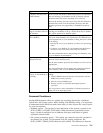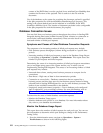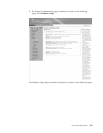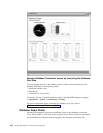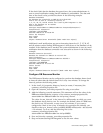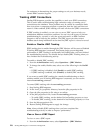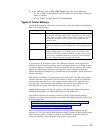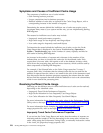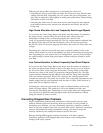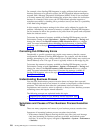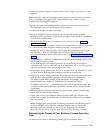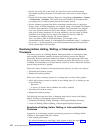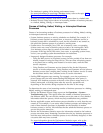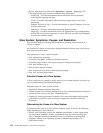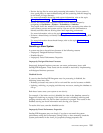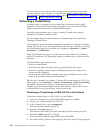Following are the possible consequences of increasing the cache size:
v Increasing the size too much does not make the system any more effective than
reading from the disk. Depending on your system and your configuration, you
may have to adjust the cache settings to attain peak performance without losing
the benefit of cache over disk.
v Increasing the cache sizes for items that are not used frequently may degrade
performance because more resources are allocated to the caches, but are not
being used.
High Cache Allocation for Less Frequently Used Large Objects
If you review the Cache Usage Report and notice that the number of requests to
the cache are low, you can reduce the size of the cache values using the
Performance Tuning Utility, or manually decrease the values in the
install_dir/properties/noapp.properties file. The low request number indicates that
the objects in the cache are not used frequently with your business processes.
Review the value for the cache property and reduce the cache size if the cache size
is large.
Decreasing the cache size too much may cause a reduced number of hits to the
caches, which results in a call to the database for data, and increases the processing
time. Depending on your system and your configuration, you may have to adjust
the cache settings to attain peak performance without losing the benefit of cache
over disk.
Low Cache Allocation for More Frequently Used Small Objects
If you review the Cache Usage Report and notice that the number of requests to
the cache are high and the number of hits to the cache are low, you can increase
the size of the cache values using the Performance Tuning Utility, or manually
increase the values in the install_dir/properties/noapp.properties file. The high
request number indicates that the objects in the cache are being used frequently
with your business processes. Review the values for the cache properties and
increase the cache size if the cache size is small. This is especially important for the
smaller objects that are used frequently and are static in value. Cache retrieval is
faster than disk or database retrieval.
Increasing the cache sizes too much may cause a reduced number of hits to the
caches for larger objects. This results in a call to the database for data, and
increases the processing time. Depending on your system and your configuration,
you may have to adjust the cache settings to attain peak performance without
losing the benefit of cache over disk.
Correcting Dropped Data Problems
Proper requirements planning and performance tuning usually prevent most
memory-related issues from occurring. However, because it is not possible to
anticipate every situation, you may occasionally experience a memory problem.
Some of the more common issues are covered in this section. Whenever you adjust
memory allocations after initial performance tuning, you must increase the
memory amount by the smallest increment to resolve the issue.
Because Sterling B2B Integrator interacts extensively with other systems,
sometimes, problems with dropped data occur because of the configuration
settings of the other systems.
Performance Management 229



